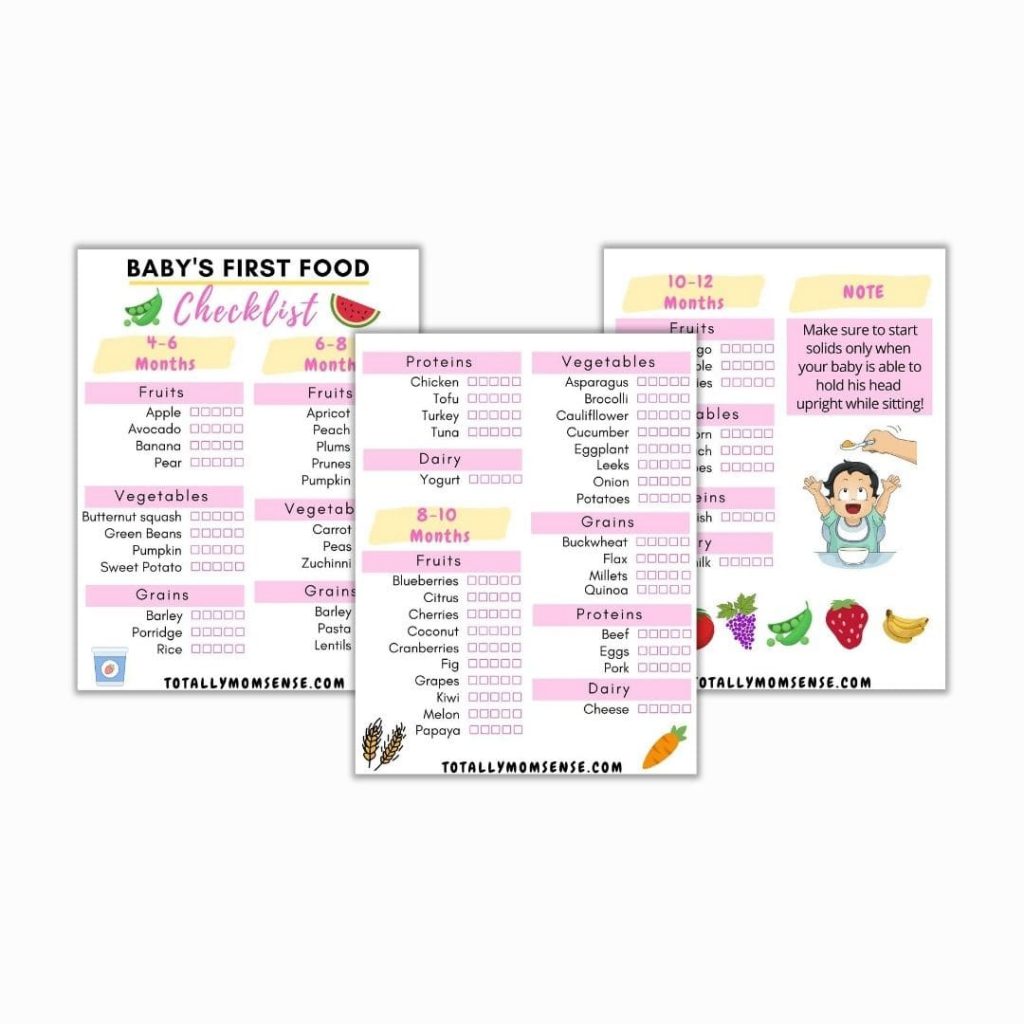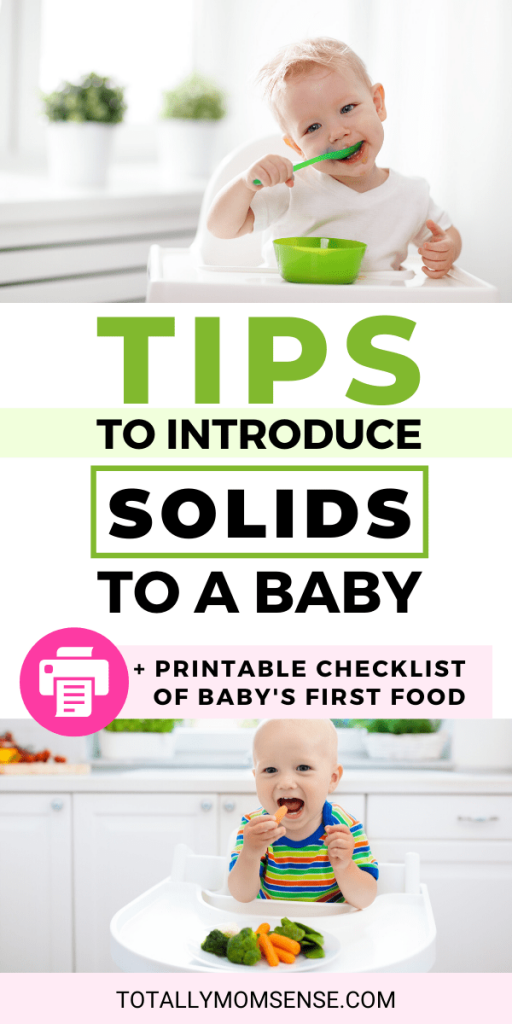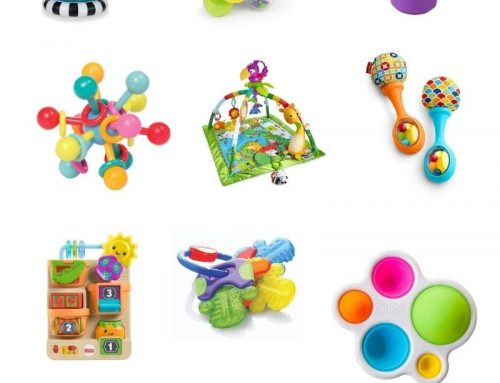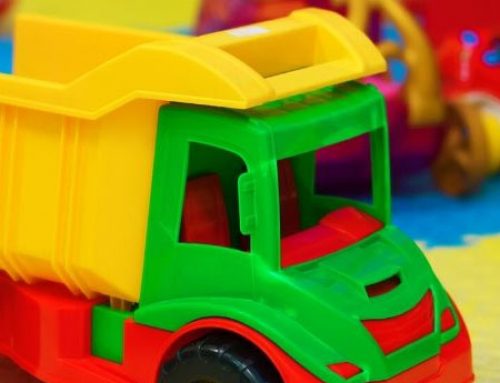Excited to start introducing solids to your baby? Find helpful tips on how to introduce solids to a baby + free printable checklist of baby’s first food.
Introducing solids to your little one in such an exciting milestone. You are finally opening your baby to the world of flavors and textures. It will be an exciting journey to watch your baby’s expression on every new taste he explores as well as what food he likes and what he does not.
I remember my time of introducing solids to my daughter. My pediatrician gave me the green signal when my daughter turned 5 months old and at that time all I could think of was what new fruit or vegetable to introduce to her. I loved watching her try new things and was always amazed when she took to a particular food item more willingly as compared to the other.
Here is a complete guide on when and how to introduce solids to your baby as well as don’t forget to grab your FREE printable checklist of baby’s first foods.
Click the link here to download the baby’s first food printable checklist

Pin this post to keep it handy all the time!

When to start solids
To decide if your baby Is ready for the big world of solids, you should look for the following cues in your little one.
- Your baby should be between the age group of 4-6 months old
- You have the green signal from your pediatrician
- Your baby can hold his head upright while sitting
- Your baby seems interested in the mealtime and watches your and your partner’s food with excitement
- Your baby is able to make back-and-forth movements with the tongue
- Your baby still appears hungry even after 28-32 ounces of milk
- Your baby wakes up multiple times in the night for feeding as his stomach size has increased
Keep a lookout for all these cues in your baby’s behavior when you are considering introducing solids to your little one. But most importantly, make sure that you only introduce solids to your little one after he turns four months old. AAP (American Association of Pediatricians) recommends that the best age to introduce solids into your little one’s schedule is anywhere between 4 – 6 months old.
What baby food should I introduce first
When it comes to baby’s first food there are no correct answers to that. It’s more important to introduce a wide assortment of flavors and healthy food to your baby Studies have shown that trying that introducing a wide variety of flavors to your infants from early on can keep picky eating at bay, keep away allergies as well as make them more willing to adapt to new foods in the future.
Below are some tips for different age groups:
- 4 to 6 months: Baby cereal, such as oatmeal, rice, barley. Combine ½ – 1 tsp of this cereal with 6 to 8 spoons of formula or breastmilk. As your baby gets used to the cereal, keep making it thicker by reducing the breastmilk or formula quantity. Cereals are a great source of iron for infants.
- 4 to 8 months: Single ingredients fruits or vegetable purees. These purees should be absolutely mashed or boiled accordingly so that they are easier for babies to swallow. At this stage, you can introduce fruits like Avocados, apples, banana & pears. And vegetables like Butternut squash, sweet potato & green beans.
- 6 to 9 months: By this time, you can start mixing 2-3 flavors together as your baby has already started to enjoy the individual flavors. But make sure that the food is still mashed and in pureed forms. Also, you can offer simple finger foods that can be easily mashed like a slice of avocado or small cut pieces of banana. You can also start to introduce meat in the form of purees mixed with vegetables.
- 9 to 12 months: As your child’s taste evolves, transition into thicker purees. Use a fork to mash instead of blenders and keep exploring the different food items
Also, there is no scientific evidence proving that introducing fruits before vegetables to your baby will lead them to have a preference over sweet food items. So, feel free to start with any food item and offer it to your little one for at least three days before moving onto the next food item.
How many times a day should I feed solids at the beginning
Start with one meal a day. It is highly likely that your child might not take to the solids immediately. Some tips to keep in mind when forming a solids schedule for your baby.
- Start slow and in small quantities
- Start with one meal a day, probably in the morning as the baby is the hungriest
- Slowly transition to two meals a day – morning and later afternoon
- Once your baby starts to enjoy solids, make it three times a day – breakfast, lunch, and dinner
AAP recommends milk (breastfeeding/formula) to be a vital part of the baby’s nutrition up to one year of age. Here are some guidelines on how much milk should be given to a baby at different stages.
- 0-3 Months: Breastfeed every 1-3 hours or formula 18-40 ounces
- 4-5 Months: Breastfeed every 2-4 hours or formula 24-45 ounces
- 6-8 Months: Breastfeed every 3-4 hours or formula 24-37 ounces
- 9-12 Months: Breastfeed every 4-5 hours or formula 24-31 ounces
What is the best stage 1 baby food
Download this free baby’s first food checklist that has a wide variety of healthy and nutritious food items from fruits, vegetables, proteins, grains, etc that you can offer your baby. Also in front of each food item, there are five trackers. Always offer the same food item multiple times to your baby as their taste buds will keep evolving with time.
Is it all rite to introduce allergen foods early on
There is no rule currently that states that you should keep off from introducing allergen foods to your infant. Infact AAP believes that introducing allergic foods early can reduce the risk of developing a food allergy, especially if your child is at risk. Check out this article for more information.
Common allergenic foods include peanuts, eggs, and dairy.
Some more tips to keep in mind while introducing solids to your baby
- Introduce one food item for at least 3 days before moving onto the next one
- Offer the same item multiple times to your baby even though if he did not like it for the first time as his taste will evolving and he might be able to enjoy a particular food item a little later on
- Avoid giving honey to your baby in the first year as there is a risk of infant botulism which is very dangerous for babies
- Also, avoid cow’s milk in the first year as it can be stressful for your baby’s growing kidneys. You can read more on how to introduce cow’s milk to you one year old here
- Avoid food items that can cause potential choking hazards
- Avoid salt & sugar as baby’s don’t need them initially. They are exploring all these flavors for the very first time and so make their first food by mixing different food items together so that they get to enjoy the real flavors of these food items
- Yogurt is good to be given to babies as it has live, active cultures that break down the lactose and protein, so it’s much easier for babies to digest
- Never offer undercook meat or eggs to babies as it can cause bacterial infections which can be very dangerous for them
- Always be present when your baby is eating something for the very first time so that you can keep a watch out for allergies and choking hazards
What is the best baby food brand to buy?
There a few really good brands that are safe for the baby’s first food. My ultimate favorite are Beech-Nut and Stony Fields Farms. They have high quality and organic baby’s food according to different stages of baby’s growth. Also, the Stony Field Farms organic yogurts were a great hit with my daughter and still are. Another good brand to try out is Gerber’s.
Enjoy helping your little one explore the different flavors of all the fruits and vegetables. It’s a very exciting milestone for little ones, so make sure you document their expressions for your memory 🙂











Leave A Comment